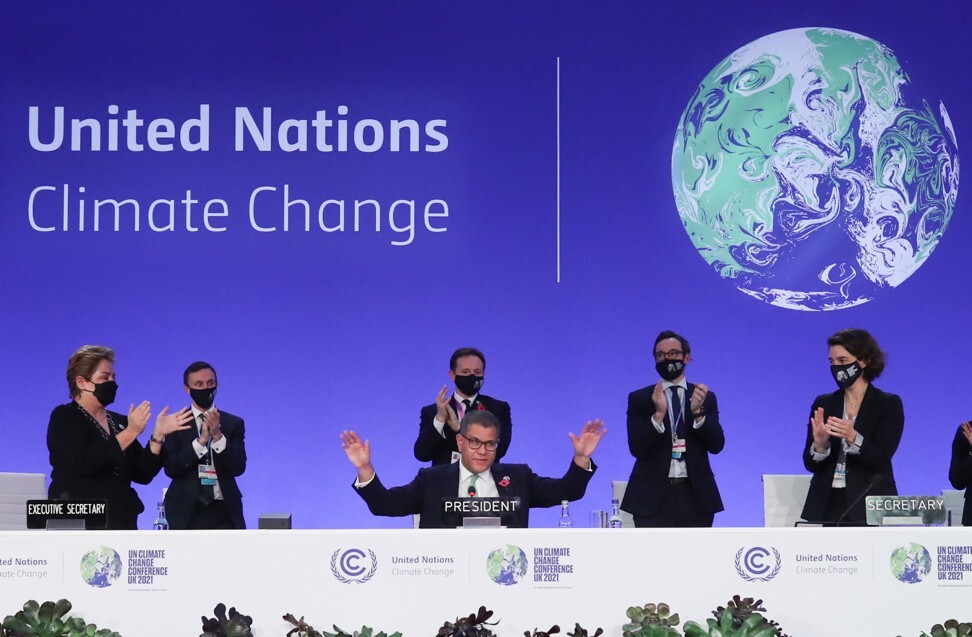
COP26: Chinese climate adviser rates Glasgow summit a success, saying it ‘achieved good progress’
- Going into the talks, China sought a ‘powerful, balanced and inclusive result’, green energy workshop told
- ‘US-China joint declaration provides new impetus for COP26 and it leaves room for future cooperation’
“Especially, it completed the negotiations on the Paris Rulebook and achieved good progress,” said Wang Yi, a climate specialist with the Chinese Academy of Sciences, referring to the guidelines for how countries should implement the Paris Agreement.
“We hoped the summit could achieve a powerful, balanced and inclusive result,” he said. “In general, it was a successful conference.”
Wang was speaking via video link at the 2021 Green Energy Transition International Workshop hosted by the Natural Resources Defence Council’s Beijing office on Wednesday.
COP26 closed in Glasgow on Saturday with nearly 200 countries agreeing to adopt the Glasgow Climate Pact. The pact asks nations to revisit and strengthen their 2030 emissions reduction targets by the end of next year to align with the Paris Agreement temperature goal.
The Paris Agreement aims to hold the rise in the global average temperature to well below 2 degrees Celsius above pre-industrial levels and pursue efforts to limit the temperature increase to 1.5 degrees.
The pact targeted fossil fuels for the first time, calling on nations to accelerate efforts towards phasing down unabated coal power and phasing out inefficient fossil fuel subsidies. Unabated coal power is coal power without carbon capture technology.
In 2009, developed countries committed to mobilise US$100 billion a year by 2020 to support climate efforts in developing countries. In the Glasgow Climate Pact, it was “noted with deep regret” that the goal was not met, and it urged developed countries to fully deliver urgently and then through to 2025.

Negotiators completed a deal to set rules for carbon markets. They agreed to avoid double-counting, the use of the same emission reductions by more than one country as counting towards their climate commitments. But nations decided to allow the use of old carbon emission credits generated from 2013 under the clean development mechanism of the Kyoto Protocol to help meet their new climate commitments.
“At COP27, it will be crucial that negotiators put stringent guidelines in place to ensure these credits represent real reductions and minimise how many end up being used,” said Ani Dasgupta, president and CEO of the World Resources Institute.
There were also a number of notable side deals made at the conference. More than 100 countries have signed up to the global methane pledge, which aims to limit methane emissions by 30 per cent compared with 2020 levels by 2030.
Wang told the green energy conference “everyone felt surprised” when the China-US joint declaration was released in Glasgow but China had been working on and promoting the issue since April.
“[Chinese climate envoy] Xie Zhenhua always said he basically met John Kerry [via video link] at least every 10 days,” Wang said.
“The US-China joint declaration provides new impetus for COP26 and it leaves room for future cooperation [between the two countries],” he added.

